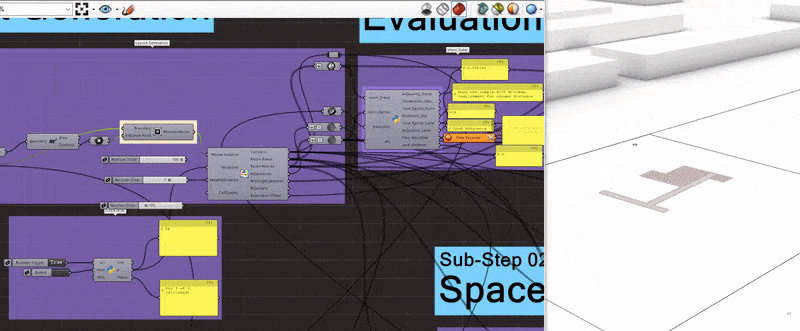ABSTRACT
LAYOUT GENERATOR
This research introduces a computational framework for early-stage architectural design that automates the generation and evaluation of building layouts. The approach begins from basic inputs—program requirements, site boundary, and context—and produces alternative spatial arrangements that are assessed against architectural and regulatory constraints. The framework ensures that generated layouts respect programmatic adjacencies, daylight access, and escape route standards, offering architects a rapid means of exploring feasible solutions. By integrating generative tools with performance-based evaluation, the research supports informed decision-making in the early design phase, where flexibility and efficiency are most valuable.
Introduction
The early stages of architectural design have long inspired the development of computational systems that can assist architects in generating and evaluating layout alternatives. Popular generative design algorithms in architecture include cellular automata, shape grammar, evolutionary algorithms, and machine learning.
Recent advancements in generative machine learning, like variational autoencoders (VAEs) and GANs for architectural applications. These approaches, widely applied in engineering design, are now used to generate floorplans: Huang and Zheng (2018) applied a pix2pix GAN for architectural layouts [48], Chaillou (2019) developed ArchiGAN for apartments [50].
However, their application to architectural space layout still faces significant challenges: (1) data sparsity, since annotated, standardized architectural datasets are scarce and costly to prepare; (2) limited creativity, as models often replicate patterns from training data rather than generate novel yet feasible solutions [52]; and (3) the lack of parametric detail, since many outputs are image-based and cannot be directly used in professional workflows.
For this reason, our focus is not on cataloging all available approaches, but rather on those most relevant to our hybrid methodology. Specifically, we emphasize physics-inspired field models such as the Magnetizing Floor Plan Generator (Mäkelä, 2020), which apply attract–repel logics to relational diagrams and provide a direct parametric basis for space allocation. These methods enable layouts to emerge from adjacency forces, circulation logics, and boundary constraints.
METHODOLOGY
Building on this tradition, our framework extends such models into a multi-objective performance-based process: layouts are first generated through attract–repel field logic, then filtered using hard-gate rules (minimum egress distances, adjacency quality) and refined by soft-gate simulations (daylight performance). This hybrid approach balances generative flexibility with regulatory compliance and environmental evaluation, bridging the gap between schematic creativity and early-stage performance assessment.
WORKFLOW
This thesis adopts the Magnetizing physics-field model as the generative core but extends it into a hybrid, performance-guided framework. The contribution lies in combining:
- Field-based generation from relational diagrams (attraction–repulsion forces).
- Rule-based constraints such as minimum diagonal escape distance and adjacency scoring.
- Performance simulation filters using Ladybug/Honeybee daylight analysis.
This approach effectively merges the flexibility of physics-inspired generation with the rigor of regulatory and performance-based evaluation.
The result is a framework capable of rapidly generating, filtering, and ranking layouts in early design, providing architects with actionable options that
respect both functional constraints and environmental performance goals
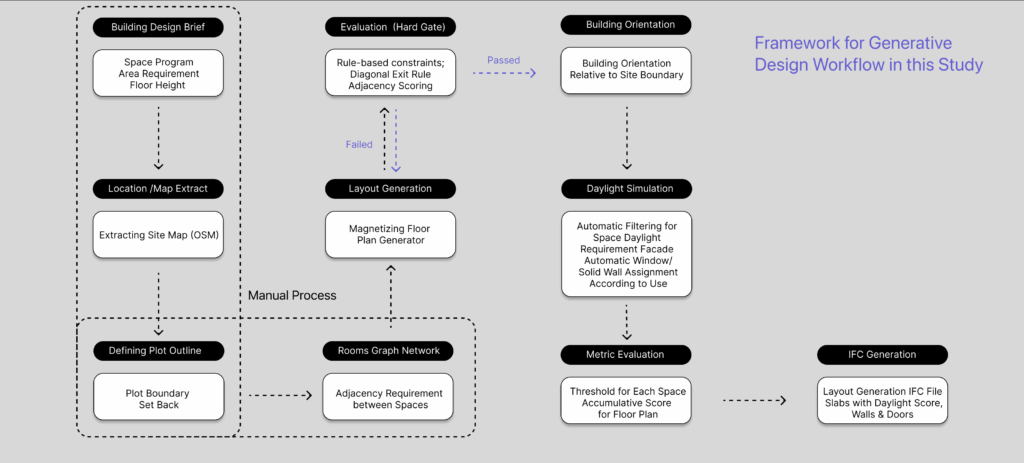
Framework for Generative Design Developed in Grasshopper
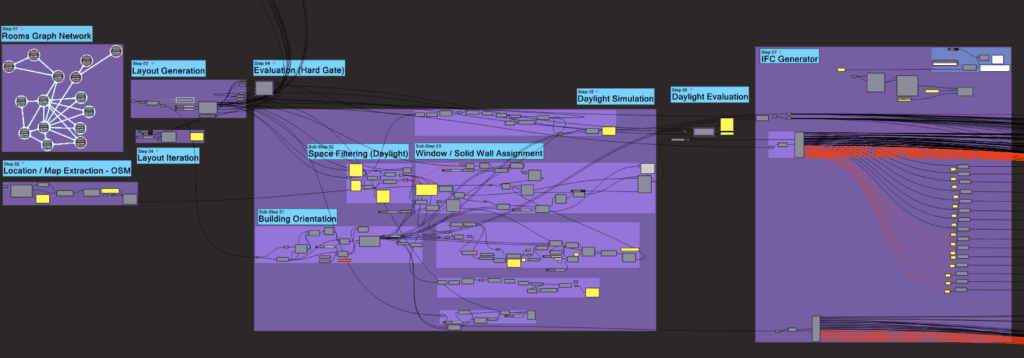
Manual Process
Building Design Brief
Since office buildings usually consist of typical floors, the focus is on generating these layouts with defined program areas, while accounting
for site constraints ensure functional efficiency and regulatory compliance.
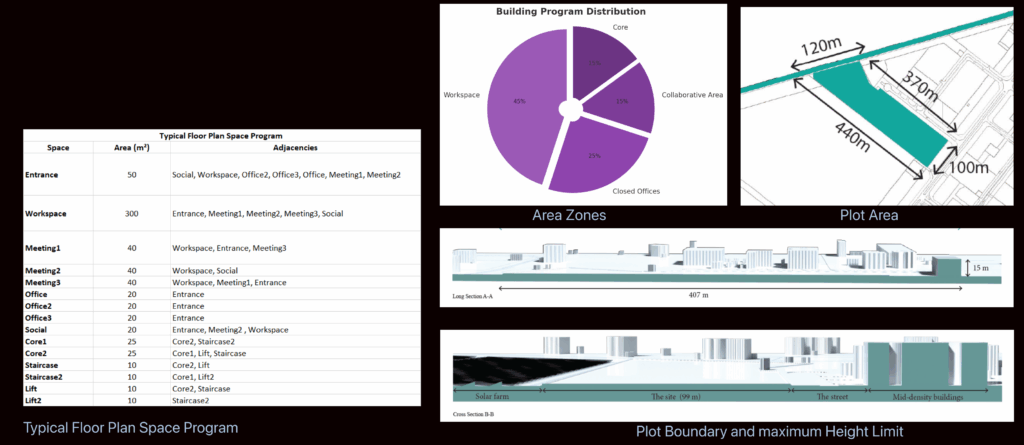
Location / Map Extract
The site context was extracted from (OSM) by selecting the project area that is used in Urbano in Grasshopper, context used for layout generation.
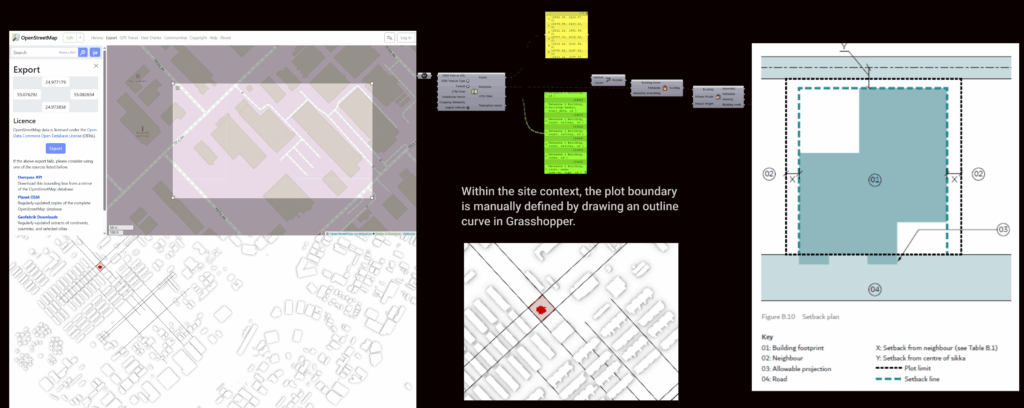
Rooms Graph Network
In the manual process, adjacency relationships between program spaces are defined . Each node represents a space, , while edges illustrate adjacency requirements.
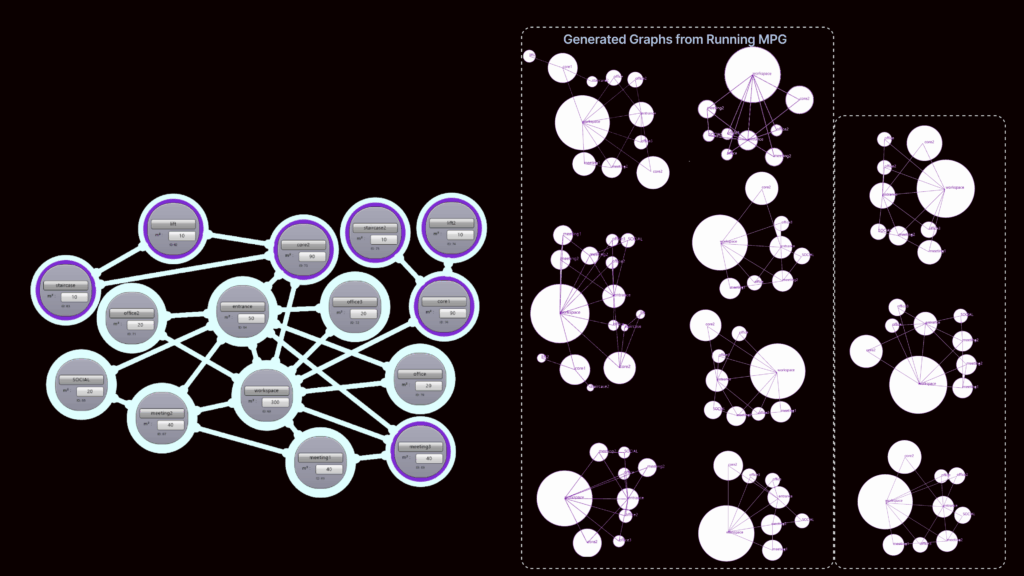
Parametric Process
Layout Automatic Generation MGP
In the generated layouts, only a subset of a required room–to–room connections is achieved. This means that even if the area distribution
looks balanced, the resulting plan can fail to capture the full relational of spaces and can be as well a result of plot orientation from project north
.
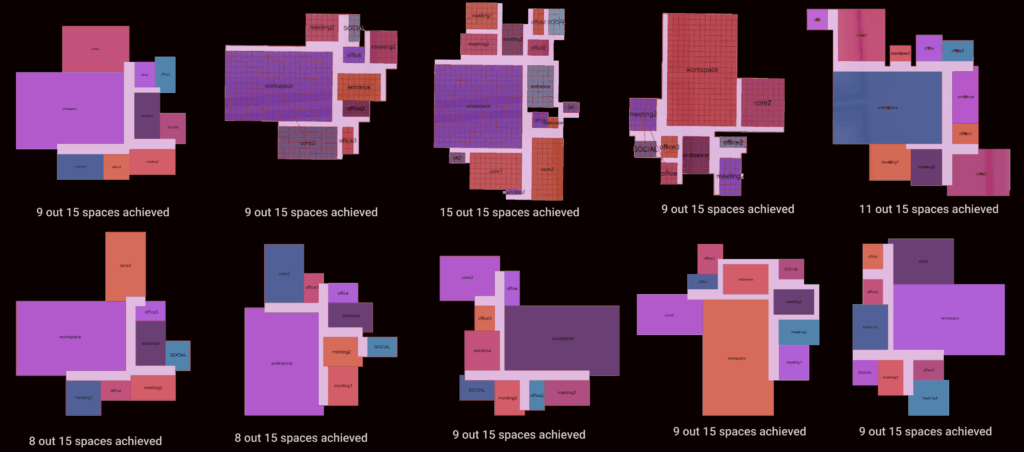
Hard Gate Evaluation
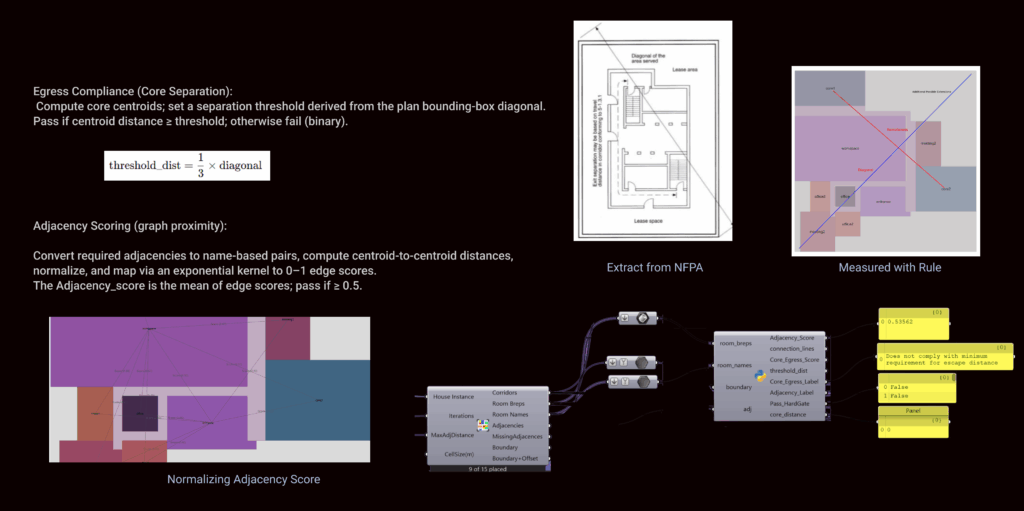
Classifying Spaces & Running Daylight Analysis
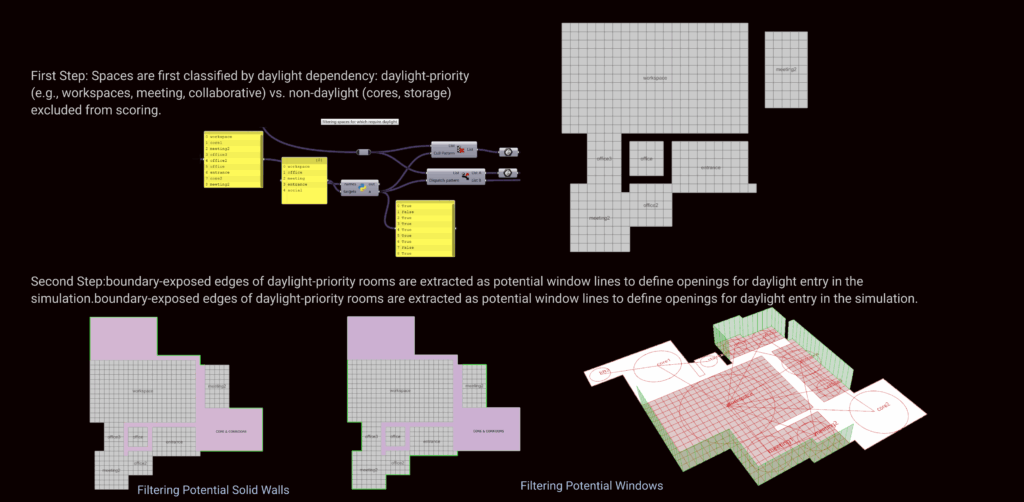
Classifying Spaces & Running Daylight Analysis
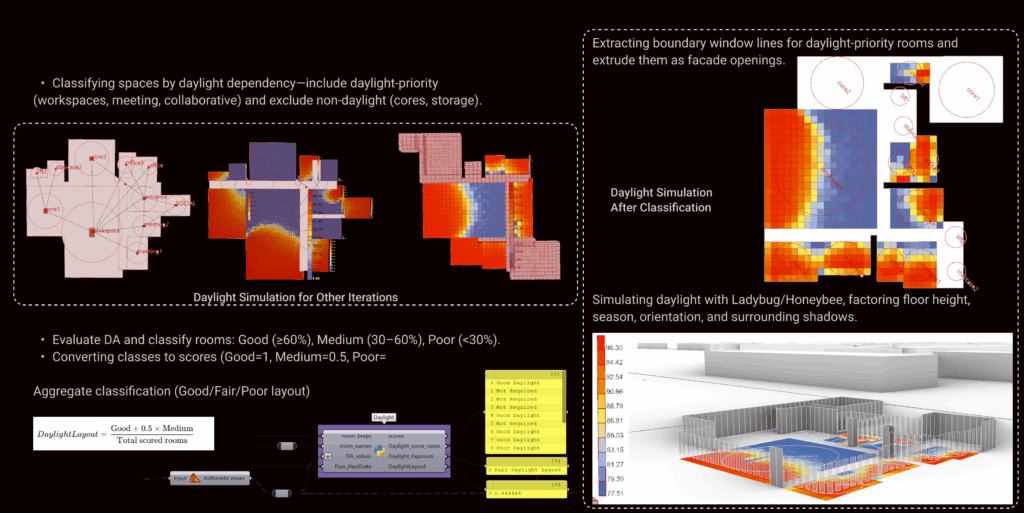
3D IFC File Generator
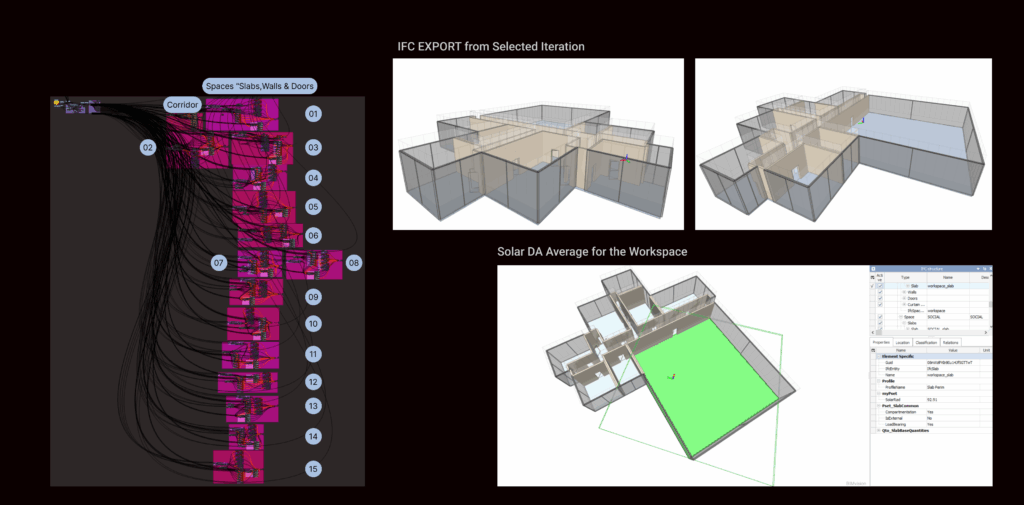
Model Demo
